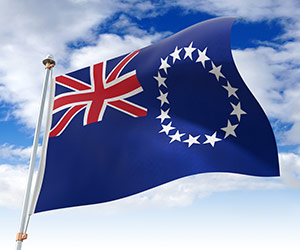 Domestic asset protection is any form of protection that relies on the laws of the United States for its ultimate security. This begins with the simple bankruptcy exemptions which are available to everyone and culminates with a Domestic Asset Protection Trust (DAPT), now available by statute in 17 U.S. states including Delaware, Nevada and Alaska, and most recently West Virginia.
Domestic asset protection is any form of protection that relies on the laws of the United States for its ultimate security. This begins with the simple bankruptcy exemptions which are available to everyone and culminates with a Domestic Asset Protection Trust (DAPT), now available by statute in 17 U.S. states including Delaware, Nevada and Alaska, and most recently West Virginia.
If you have been researching offshore asset protection, you’ve likely come across companies that offer various forms of domestic asset protection, often using the most well known domestic asset protection tool, the Family Limited Partnership, which is both popular and effective. And of course, nowadays you will see plenty about the new domestic asset protection trusts, which are designed to imitate the stronger and more effective offshore jurisdictions and attract business to the states that have enacted DAPT legislation.
And as far as that goes, a good onshore asset protection plan is likely better than nothing at all. They are often simple to set up, easy to implement and sometimes less expensive (although not always) than a full blown international plan. But, as with most things, that simplicity comes with a cost. Domestic asset protection is, by definition, less effective than a solid offshore plan. For complete asset protection, it’s ideal that your domestic asset protection plan be accompanied by a foreign component which is set up in a jurisdiction out of the United States.
Going Offshore
 Any asset protection program based fully within the U.S. runs the risk that a U.S. judge or court determines that the plan should be pierced or invalidated. This is an inherent risk of all domestic only plans. In contrast, an asset protection trust in the Cook Islands or one of the other solid asset protection jurisdictions, is statutorily prohibited from recognizing any court order from any outside jurisdiction, including a United States court. This is a major difference and pretty much sums up the reason why offshore has proven to be stronger.
Any asset protection program based fully within the U.S. runs the risk that a U.S. judge or court determines that the plan should be pierced or invalidated. This is an inherent risk of all domestic only plans. In contrast, an asset protection trust in the Cook Islands or one of the other solid asset protection jurisdictions, is statutorily prohibited from recognizing any court order from any outside jurisdiction, including a United States court. This is a major difference and pretty much sums up the reason why offshore has proven to be stronger.
Lodmell & Lodmell often uses an Asset Management Limited Partnership ™ (AMLP) together with a carefully crafted Bridge Trust® to help build a legal fortress around your vulnerable assets, keeping them safe and out of the grasp of predatory creditors. We do this by legally separating you from your assets by means of the AMLP and by “internationalizing” those assets in the Bridge Trust® if and when you are threatened by an unanticipated lawsuit or other legal action. By using both U.S. tools as well as having a Trust which can be moved fully offshore we get the benefits of both jurisdictions. This means simplicity of set up and maintenance as well as the protection of offshore when its needed.
Not All Asset Protection Services Offer Offshore Protection
Many local asset protection advisers who urge you to go for a fully domestic plan may be aware that domestic protection is not as effective, but may also not have the resources, experience or the know-how to set up an offshore trust or a Bridge Trust. An offshore asset protection program is more complicated and complex to set up. Many advisers just aren’t comfortable offshore. While this is understandable, it is in your best interest to assess the effectiveness of any plan before you agree to move forward.
The best way to determine if your assets are at risk and the legal options available to protect them, is to schedule an Asset Protection Analysis. We will provide a confidential review of your financial resources, including your risk and asset levels and personal objectives.
Taking control of your own financial, estate and asset protection planning is critical to your peace of mind. Let us help you gain that peace of mind. Please call 800.231.7112 to schedule your analysis. You can
Comments (0)